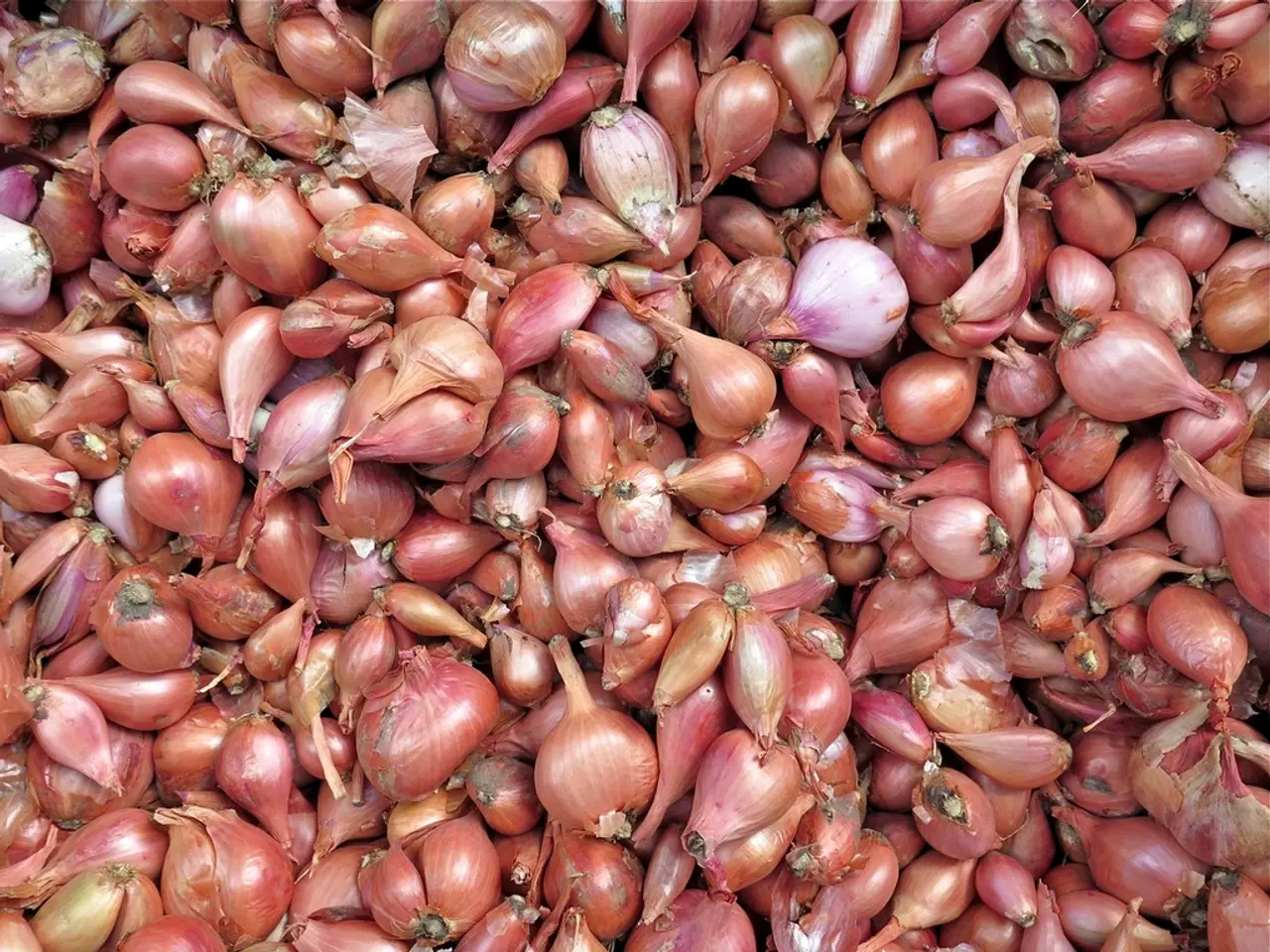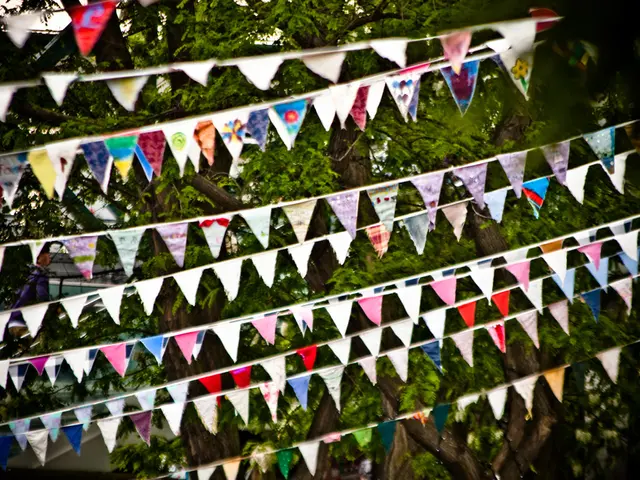Onion Harvesting Guide: A Comprehensive breakdown of the process and ideal timing for onion harvest
In the heart of the growing season, it's time to consider harvesting onions. Susan Patterson, a seasoned gardener, shares her insights on the best practices for harvesting, curing, and storing onions.
To achieve optimal flavor, it's essential to harvest onions when about 50 to 80% of the onion foliage has fallen over and bent. This usually occurs between 90 to 150 days after sowing, depending on the variety and growing method. Onions started from transplants usually take 3 to 5 months; direct-seeded onions may require 120 to 210 days.
Preparation before harvest is crucial. Stop watering about a week or two before harvest to allow the soil and bulbs to dry. After harvest, gently shake the soil from the bulbs and allow them to dry.
Curing is the next step, which involves drying the onions for 2 to 3 weeks in a warm, dry, and well-ventilated area. This process helps the onions' necks to dry and their outer skins to become papery.
After curing, trim the roots and cut the tops, removing any damaged outer skins but avoiding cutting too close to the bulb to prevent spoilage. Onions should be stored in a cool (32°F to 45°F), dry, dark, and airy space with good ventilation, such as mesh bags or baskets. Maintain humidity levels around 65-70% and avoid temperatures over 70°F to prevent sprouting or rotting.
Following these guidelines ensures onions develop optimal flavor by fully maturing and prevents excess moisture that could cause rot during storage. Proper curing and storage can keep onions fresh for up to a year under ideal conditions.
Onions, a popular cool-season vegetable, have been cultivated for over 4,000 years. Growing onions from seed is more difficult and takes longer before bulbs are ready to harvest. However, learning how to harvest vegetables is important for every plant in the garden, but especially so for onions.
For those interested in growing onions, planting sets as soon as the garden can be worked for best results. It's best to create hills for onions that are to be used for green onions but do not hill those to be used for bulbs. Harvest tops for green onions as soon as they reach 6 inches (15 cm.) in height.
Harvesting onions should be done carefully to avoid damaging the plants or bulbs. Bruising onions during harvest can make them more susceptible to rot. Onions can provide a kitchen staple through the fall and winter.
In summary, following these care steps maximizes onion flavor, storage life, and reduces spoilage risk. Happy harvesting!
Reference(s): - [1] Patterson, S. (2022). Onion Growing Guide. Retrieved from www.gardeningknowhow.com/edible/vegetables/onion/onion-growing-guide.htm - [2] Draiss, A. (Digital Community Manager). (2022). The Ultimate Guide to Growing Onions. Retrieved from www.almanac.com/plant/onion - [3] Walters, L. (Content Editor). (2022). How to Grow Onions: A Complete Guide. Retrieved from www.thespruceeats.com/how-to-grow-onions-3113849 - [4] Gardening Know How. (2022). How to Store Onions. Retrieved from www.gardeningknowhow.com/edible/vegetables/onion/onion-storage.htm
Marketing the importance of home-and-garden care, Susan Patterson emphasizes the role of gardening in optimal onion lifestyle, showcasing best practices for growing, harvesting, curing, and storing onions. For those eager to emulate her onion-care expertise, utilizing her onion growing guide from gardeningknowhow.com can offer insights.




